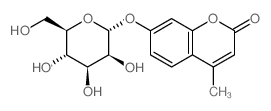The putative role of members of the CEA-gene family (CEA, NCA an BGP) as ligands for the bacterial colonization of different human epithelial tissues.
H G Leusch, Z Drzeniek, S A Hefta, Z Markos-Pusztai, C Wagener
文献索引:Zentralbl. Bakteriol. 275(1) , 118-22, (1991)
全文:HTML全文
摘要
Immobilized purified CEA (carcinoembryonic antigen), NCA (non-specific crossreacting antigen) and BGP I (biliary glycoprotein I) bind strains of E. coli (including EPEC) and some Salmonella species (including S. typhi, S. paratyphi A + B and S. java) while Shigella-, Yersinia- and Bacteroides- strains showed no adhesion. The binding was of high avidity, heat sensitive, dose dependent, saturable and nearly completely abolished in the presence of 10 mM alpha-methylmannoside. From inhibition studies with aromatic mannose compounds, it was suggested that in contrast to Salmonella strains E. coli strains exhibit a higher hydrophobicity in the binding region adjacent to the CEA-, NCA- and BGP-binding site. By further inhibition experiments it could be demonstrated that E. coli and Salmonella strains bind to high-mannose type oligosaccharides of these molecules via lectins on bacterial type I fimbriae. We conclude that the expression of products of this gene family on different human epithelial cells (colon-, bile canaliculi, uroepithel etc.) may function as ligands for bacterial colonization of epithelial tissues.
相关化合物
| 结构式 | 名称/CAS号 | 分子式 | 全部文献 |
|---|---|---|---|
 |
4-甲基伞形酮基α-D-吡喃甘露糖苷
CAS:28541-83-5 |
C16H18O8 |
|
Binding of manno-oligosaccharides to concanavalin A. Substit...
1980-01-01 [Eur. J. Biochem. 103(2) , 307-12, (1980)] |
|
Enzyme studies on human and snail beta-mannosidase using a f...
1992-04-01 [Int. J. Biochem. 24(4) , 669-73, (1992)] |
|
Kinetics of interaction of some alpha- and beta-D-monosaccha...
1980-09-01 [Biochim. Biophys. Acta 631(3) , 428-38, (1980)] |
|
Binding of methylumbelliferyl mannoside to concanavalin A un...
1984-10-09 [Biochim. Biophys. Acta 790(1) , 87-90, (1984)] |
|
The soluble alpha-mannosidases of Drosophila melanogaster.
1997-07-01 [Insect Biochem. Mol. Biol. 27(7) , 657-61, (1997)] |